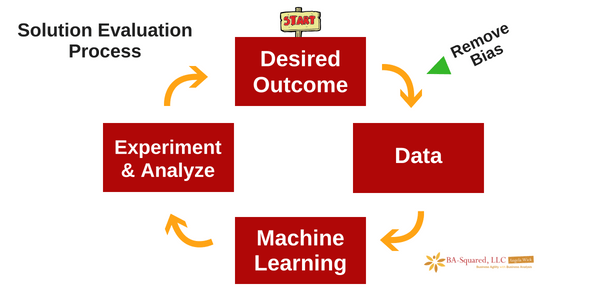This article discusses entities supporting the concepts product, customer, sale, and location.
The names given to these entities varies depending on the line(s) of business an organization is in and, in particular, the organization’s sales processes.
Product-Related Entities
The concept of product within the context of this series was defined in Part 3 as covering both goods and services, where ‘goods’ are things a customer can take ownership of and ‘services’ are resources a customer uses for a period of time. Goods have inventory levels (i.e. one or more instances available for purchase). Services have resource availability, at designated times (i.e. trained or qualified individuals to perform the service, and/or equipment appropriate to fulfil the service).
An entity representing an organization’s products will do so as a type, a batch, or as an instance.
Product Type – The products offered for sale by many organizations are not unique. For example, clothes, furniture, electronics, and pre-packaged food found in retail stores. A product type entity is used to record the name, size, price, etc., where values for these attributes apply to all instances of a given product.
Product Batch – Products that are mass-produced can have one or more things vary within their production process (e.g. involve batches of components or ingredients from different suppliers). When it’s critical to an organization to track these variations, a product batch entity is needed. Its purpose is to maintain details about critical variable elements. Each product instance produced as part of that batch is associated with its batch instance.
Product Instance – Some goods products are, by their nature, unique. Examples include property (i.e. real estate) and works of art. Other goods start life as similar, mass-produced instances, but can take on individual characteristics over time as the result of normal use, instance-specific modifications, or damage.
When an organization sells used, modified, or damaged goods, an entity representing each product instance is needed. That entity may make reference to the instance’s product type, if available, to represent its time-independent attributes. The product instance entity will need attributes similar to those of the product type entity, where a value that was common when the product was new can change over time. Plus additional attributes will be needed in the product instance entity to classify and describe its current condition.
In the case of service products, a product instance entity is not for the purpose of representing changes over time. Its objective is to represent specific ‘offerings’ of the service. Examples include appointment time-slots, rental availability periods, a specific scheduled flight on a route, the designated time and venue for the screening of a film, a live performance, or sporting event.
Well-defined data about products involves recognizing which of the above levels are needed by the organization, and naming those entities appropriately. When multiple levels are involved, product details (attributes and relationships) are included at the appropriate level, including the linking between levels.
Customer-Related Entities
An organization supports processes to maintain details about its customers within an IT-based system for one or both of the following reasons:
- The organization has an ongoing relationship with, or obligation to, its customers in relation to the sale of one or more of its products (e.g. supply of electricity, a loan, an insurance policy).
- The organization wants to be able to communicate with its customers to sell them additional products (e.g. the newest generation of a consumer product, a one-off service that a customer can benefit from periodically).
There are many organizations, such as those involved in retail sales, which sell their products to unknown customers. One mechanism commonly used by organizations to know who their customers are is a customer loyalty scheme. The customer provides their name and contact details in exchange for discounts or other forms of rewards. Another mechanism is warranty registration, where a manufacturer records the end-consumer of its products, even though the product was not sold directly to that individual.
Some organizations offer some or all of their products only to qualified customers. Banks only provide loans to credit-worthy customers, but offer savings accounts to any customer. Some educational organizations want only the ‘best possible’ students to fill their limited student numbers. Training organizations that have more availability than students will typically accept anyone that applies. Certain healthcare procedures may require a patient to be in an appropriate state of fitness. Specific government services may only be provided to persons of a given status.
Depending on the products an organization offers, and its sales processes, the types of customers it maintains in its IT-based system may be one or more of the following:
An Individual — a person able to provide enough information that they can be distinguished from other individuals within the IT-based system. E.g. name, address, phone number, government-issued ID number.
Multiple Individuals — two or more people who are jointly involved in the sale of a product. E.g. a joint bank account, a family mobile phone plan.
An Association – a named group of individuals associated through a common factor (e.g. a profession, sport, or hobby). The association itself may be the customer, or individuals members of the association.
A Registered Business — an individual or organization that has officially registered to operate as a legally entity. E.g. a sole trader, a corporation.
A Reseller – an individual or organization involved in the sale of an organization’s products, either with the intent of reselling the products to their own customers, distributing the products further down a supply chain, or acting on behalf of individuals or organizations (e.g. a travel agent). A reseller may be franchised to use the branding of the organization.
A Governmental Branch or Department — an organization unit within a governing body with authority to procure goods or services from external sources. E.g. The Army, The Department of Education, a state-owned enterprise.
A Registered Internet User — a person that has established a unique logon ID with an organization’s internet site. The organization operating the site may or may not have a business process that associates the user to an existing customer. In cases where it does, the user is not an additional customer, but an individual with access to one or more self-service capabilities on behalf of that customer.
Well-defined data about customers recognizes the line-of-business-specific name the organization uses to reference them, such as Client, Agent, Patient, or Resident. Attributes maintained for customers include name, contact details, and information applicable to repeatable sales events (e.g. account balance, available credit, medical history).
Sale-Related Entities
The concept of sale within the context of this series was defined in Part 3 as any type of event where a customer commits to consuming one or more of the organization’s products. Depending on the product(s) involved, and the organization’s end-to-end sale process, there may be pre or post-sale event events triggering activities within the end-to-end process. These activities can involve additional sale-related entities.
Pre-Sale — A pre-sale process may be triggered by a customer or the organization. Where a customer is seeking a product offered by a particular organization, the customer triggers the process. Examples of pre-sale activities within the sales process include the customer filling out an application or order that identifies the desired product(s), or requesting an appointment, quote, or reservation.
Where the organization proactively seeks a sale by contacting a customer, each contact event is supported by an activity that can result in an offer being made to the customer.
Having initiated a pre-sale process, there can be additional events and their associated activities that take place prior to formal commitment to the sale. Examples include the customer making a refundable deposit, the organization providing a quote, submitting a bid, drafting a statement of work, or the customer and organization negotiating a contract.
Sale Commitment — Within an organization’s sale process there will be at least one activity representing the customer and/or the organization formally committing to the sale. The customer can be said to place an order, sign a contract, or pay for a booking.
Post-Sale Events — Lastly, there may be post-sale events related to the product sold, that trigger activities within the end-to-end sale processes, and involving post-sale-related entities. From the customer side these may involve subsequent purchases or usage of the product within the terms of a contract, either incurring an additional charge or utilizing pre-paid credit. Or the return of a rented item.
From the organization side, a post-sale event may involve charging a periodic service fee. Or a product may be delivered subsequent to the sale (e.g. the operation of a scheduled flight or an entertainment event taking place that was ticketed in advance). Payment may be due, or overdue for a product that was sold on credit. A service may involve periodic reporting, such as the production of a statement of account.
Well-defined data about a sale includes all entities involved in the end-to-end sales process, naming them in accordance with the line of business and organizational terminology. Attributes maintained for these entities can include the event-related dates, quantities of usage, and amounts charged to or paid by the customer.
Location-Related Entities
The concept of location within the context of this series was defined in Part 3 as a place managed by the organization for the purpose of the selling or the consuming of its products. Examples include retail stores, hotels, library branches, and properties provisioned for usage of utility services such as water or electricity.
As with products, customers, and sales, the organization’s location types relate to a given line of business. Locations have a positional aspect and an operational aspect.
The position of an organization’s locations can be:
Area-based — one or more named geopolitically-defined areas (e.g. suburbs, cities, states/provinces, countries), or map-drawn and named by the organization (e.g. sales districts, service coverage areas).
Line-based — Two or more named points defining start, end, and any intermediate stopping points. E.g. passenger air, rail or bus routes, goods transportation routes.
Point-based — A place identifiable by address and/or map-based reference. This includes locations the organization provisions with sales-related staff, such as a retail store, hotel, or bank branch. It also includes residential and commercial properties the organization has provisioned with network-based access to its product (e.g. water, gas, fibre).
Sub-Location — An identifiable point or area within a larger location. E.g. a designated floor within a building, section or seat within a sports/entertainment venue, a specific storage location within a warehouse.
Where goods are involved, an organization cares about its locations from both an operational and inventory perspective. Operational in the sense of business hours and sales staff on hand during those hours.
Where services are involved there is additional need for service-appropriate resources to support advanced or ‘walk-in’ sales. E.g. flight crew, medical staff, a rental vehicle, an aircraft or ship to provide seating or cargo space.
Well-defined data about locations involves line-of-business-specific entity names. Attributes within those entities are needed to represent its position, operation, inventory and other required resources.
NOTE: Depending on organizational context, a location can be an area or a point. E.g. from the perspective of a city authority, the city is a bounded area, but from the perspective of an airline it is a point.
Click here for Part 5 — A Business Entity Identifier Attribute





